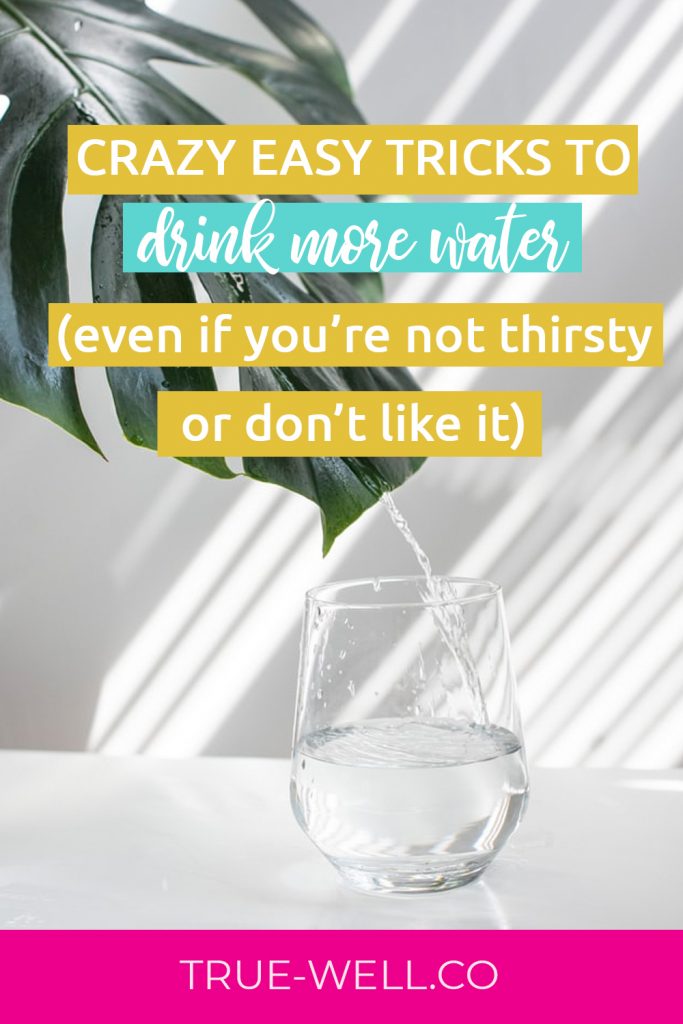One of the most important discoveries in terms of health in the last decade or so is that sugar consumption is a huge factor in weight gain as well as a myriad of health conditions and diseases. These include heart disease, prediabetes, type 2 diabetes, and other metabolic syndromes. In fact, our sugar consumption has skyrocketed to 10x what it once was just 100 years ago.
With that comes the next step: pulling oneself off of sugar and sugary foods… which may not be so easy. Many people have a sweet tooth which has led to an extremely high level of sugar intake for long enough that they have no clue where to start.
If you’ve been feeling stuck in a cycle of sugar cravings, fatigue, and frustration, you’re not alone. Many of us have tried to cut back on sugar only to find ourselves back in the pantry, reaching for just one more cookie. And it’s not just about willpower. Detoxing from sugar is about more than just cutting out desserts—it’s about understanding what sugar does to your body and your emotions.
As a nutritionist, it’s really important to help people find easy ways to get from point A to B in their health journey using food, while eliminating excess sugar. And since sugar is inflammatory, it’s literally the first step staring an anti-inflammatory diet and lifestyle.
In fact, what many people call “sugar addiction” is often a form of emotional eating. So if quitting sugar hasn’t worked for you in the past, you might need more than a basic sugar detox—you might need a full emotional eating reset. Let’s dig into what that means.
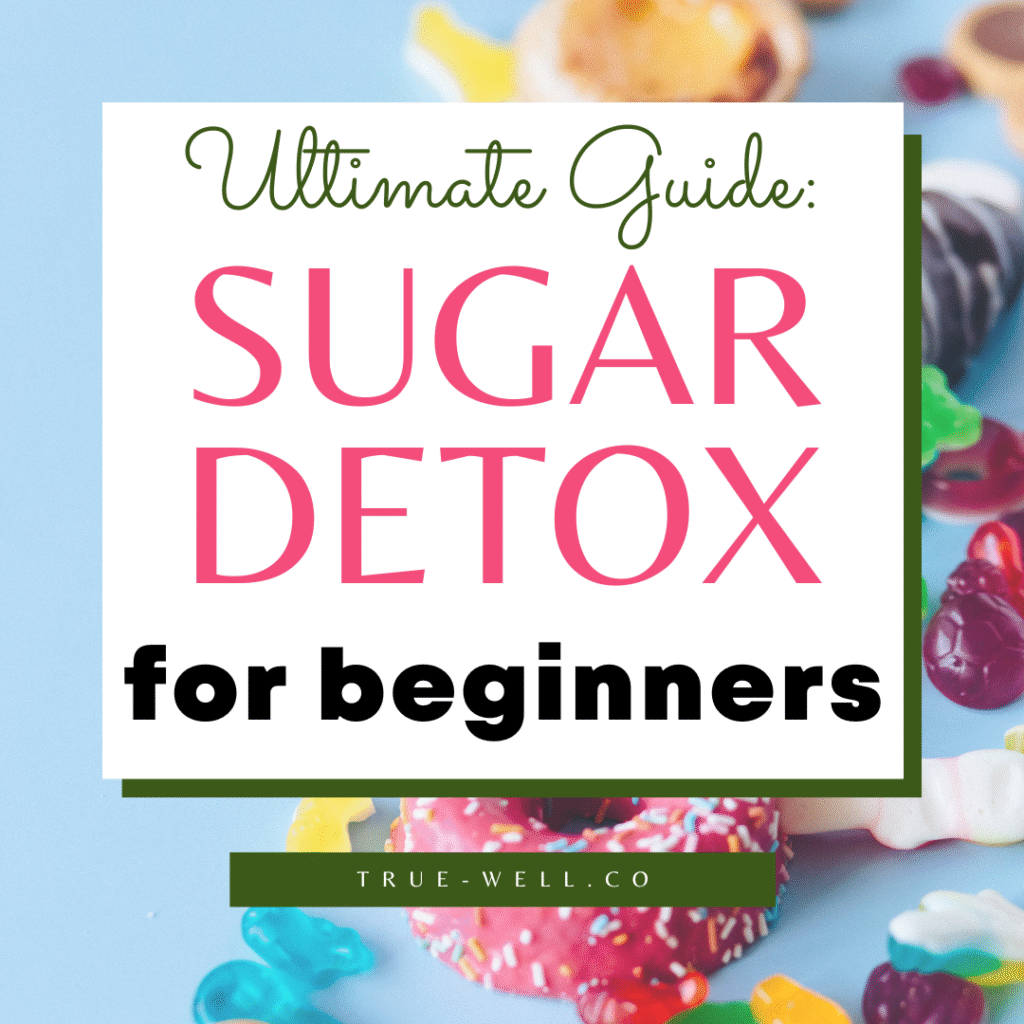
Why Detox from Sugar in the First Place?
We know sugar contributes to inflammation, weight gain, insulin resistance, and a higher risk of chronic diseases. But even if you’re not facing a medical condition or trying to lose weight, a sugar detox can dramatically improve your energy, focus, and emotional balance.
That said, many people don’t realize that cravings for sugar are often tied to emotions: stress, sadness, boredom, or even joy. That’s why this isn’t just about biology—it’s also about emotional patterns. If you find yourself eating to soothe or escape, you’re likely facing emotional eating.
Through the decades, added sugars have gradually made their way into more and more foods for flavor and sugar’s addictive properties. And now we essentially have a substance that affects the brain in the same way that addictive drugs (like cocaine) do, but it’s put in nearly all processed foods.
This makes it extremely easy to become a sugar addict, especially if you have the genetic tendency toward that. Add in more and more sugar daily, along with years of eating it and you’ve got the perfect storm of sugar addiction.

Many people decide they need to quit because they’ve tried and know how hard it is. Others have had their doctor give them the wake-up call of a condition that requires eliminating it to manage that condition. And yet others either want to or need to lose weight.
So let’s talk about the different reasons for embarking on a sugar detox in the first place.

Blood sugar levels
Current estimates are that 1 out of 3 adults has prediabetes. When you factor in the number of adults that currently do have type 2 diabetes, we’ve got a really huge population that obviously has issues with blood sugar levels.
The thing is, there are also many other conditions that get mega benefits from balanced blood sugar levels. These include PCOS, high blood pressure, and inflammatory conditions like arthritis and autoimmune conditions.
But truth be told, our body’s ability to maintain steady blood sugar levels daily is the marker for a healthy metabolism. That can’t happen if we’re programming it to go haywire with high sugar foods and refined flours (which react like sugar in the body).

Kick-start weight loss
Undoubtedly you’ve heard stories from friends or family members about how much weight they lost when they started keto or low-carb.
The truth is that switching to any dietary style that eliminates sugar and promotes healthy, non-processed foods will inherently cause most people to lose weight. (We happen to be over the moon about the Anti-Inflammatory Diet around here!)

Consumption of too much sugar in the first place
The last scenario is for those who don’t specifically have a weight loss goal in mind and haven’t had a diagnosis to prompt quitting sugar. You just know that sugar is terrible for your body and have committed to being purposeful and respectful about the food you put into your body.
To you I say, “Well done.” And here’s how to go about that practice.

How to Detox Sugar from Your Body (Without Going Cold Turkey)
Most sugar detox plans go cold turkey. That can work for some, but for others, it can cause intense withdrawal symptoms and rebound cravings. Instead, I recommend starting with a short pre-experiment:
- Track how you feel emotionally and physically after eating high-sugar or refined-carb foods.
- Notice patterns like afternoon slumps, nighttime cravings, or mindless snacking.
This gives you valuable data to decide if you simply need a sugar break or a deeper emotional eating reset.
Take the Emotional Eating Quiz to find out what level of support you really need. Your results will guide you toward the best detox strategy for your body and mind. Click here to go to the FREE QUIZ!
💡Tip: Be ready for symptoms of sugar withdrawal that may make you want to give up … (again):
Many people experience withdrawal symptoms of coming off high levels of sugar can be rough if you don’t know what to expect! Sugar detox symptoms are very likely and are a major reason people don’t complete their first week or two of a sugar detox.
These can include:
- Sugar cravings
- Headaches
- Severe exhaustion
- Severe irritability
- Even feeling sort of like you have the flu

Foods TO AVOID When Detoxing From Sugar ❌
Avoiding sugar seems straightforward, but it hides in everything from ketchup to “healthy” granola bars. During your detox, steer clear of:
- All added sugars (yes, even honey and maple syrup)
- Refined flours (they spike blood sugar just like sugar does)
- Sweetened beverages (soda, juice, flavored lattes)
- Most dairy (due to lactose)
- Processed foods with “natural” or “organic” sweeteners
Also: Watch your emotional cues. Sugar cravings are often triggered by stress, fatigue, or overwhelm.
So let’s get into it.
Sugary beverages
- Sodas (regular AND diet!)
- Fruit juice
- Sports drinks
- Coffee/tea with added sugar (this means basically any drink at Starbucks unless straight black coffee)
- Milk
- Non-dairy milks (unless they specifically say ‘Unsweetened’ on the label)
- Bottled tea
- Any other sugar-sweetened beverages
All forms of sugar
This will require reading a food label to identify sugar. So the easiest way to avoid these are to not eat anything processed or packaged while on your sugar detox, or else be able to understand the ingredients list and food label.
Ingredients that are sugar:
- any type of ‘sugar’ (ie, table sugar, cane sugar, etc)
- any type of ‘syrup’
- molasses
- dextrin
- sucanat
- caramel
- malt
- any word ending in ‘-ose’
- agave
- honey
- maple syrup
- fructose/ corn syrup/ high fructose corn syrup
- fruit juice
- concentrated fruit juice
- natural sweeteners
Many people are confused about natural sugars or sweeteners like honey, agave, and maple syrup. The bottom line on these is that–yes they can contain healthful compounds and minerals–but they are STILL sugar and counterproductive during a sugar detox.
Artificial sweeteners
Artificial sweeteners have been shown to affect gut health, as well as induce cravings. For both of those reasons, I recommend avoiding these altogether, even when done detoxing from sugar. These are:
- Aspartame (in nearly all diet soft drinks)
- Neotame
- Acesulfame K (blue packets- brand name Nutrasweet)
- Saccharine (pink packets- brand name Sweet N Low)
- Sucralose (yellow packets- brand name Splenda)
If you’re really hard-up for a sweetened beverage, try adding one of these zero-calorie alternatives:
- stevia (liquid is best)
- erythritol (make sure you can tolerate, as this is a sugar alcohol and some people are sensitive to it {tummy-wise})
- monk fruit
- allulose
Most fruits
Although fruits can be part of a healthy diet, eliminating them during this short phase will be a huge help in your metabolism getting reset.
Definitely avoid dried fruits (unless they specifically say no sugar added).
If you feel you must eat fruit, limit it to berries, as fresh fruits or frozen, as long as no sugar is added.
Dairy
Dairy is a really controversial food, I get it. But in this phase, the consensus is that milk should be avoided (because of the amount of lactose–a sugar) in it.
Yogurt should also be avoided as most types are loaded with sugars. Even plain yogurt could be an issue, so it’s best to avoid it during your sugar detox.
Grains and flour
Refined grains and flours are absolutely out of the question. They spike blood sugar levels the same way regular sugar does.
However, even whole grains can cause a huge spike in the same way. For that reason, I recommend avoiding grains and flour altogether until you’re out of your sugar detox diet.
These include:
- oats
- wheat
- rye
- barley
- farrow
- quinoa
- corn
Alcohol
Alcohol should be avoided for a few different reasons. First, it can also have an addictive nature. Your goal here is to reprogram your brain and body, and keeping alcohol in the mix is extremely counterproductive.
Second, when we get buzzed, our reason flies out the window. Many people find themselves overeating or even eating things when they’re not even hungry when they’re sippin’ on gin and juice. (Myself included).
Do yourself a favor and get rid of it before starting your sugar detox.
Foods That Help You Detox from Sugar Naturally ✔
You may be thinking that the food you CAN eat on a sugar detox isn’t as important as what you’re eliminating. But that’s really not true.
The reason is that when you load up with sugar and refined flours, you’re displacing nutrient-dense foods that you could have been eating instead. So this detox period is actually giving you a chance to ‘power up’ with healthier food choices while you’re letting your body and brain deprogram from sugar.

High-quality protein
One of the best things you can do when cutting out sugar is to increase your protein intake. This is because protein (as well as good fats, which we’ll get to in a minute) help blunt blood sugar spikes that may still happen from the carbohydrates that ARE allowed on a sugar detox.
In ensuring it’s quality protein, make sure it’s pasture-raised meat (or organic).
This can be from poultry (chicken, turkey, duck), pork, lean cuts of beef, and definitely fatty fish and seafood!
If you’re ok with soy, organic tofu is also a great option.
And lastly, hard-boiled eggs are also an easy way to get in extra protein.

Healthy fats
Good, healthy fats are also a game-changer when doing a sugar detox. Again, this helps blunt the blood sugar spikes but it also helps you feel full longer. This can be a really big help when you’re having those crazy sugar cravings.
Types of healthy fat include:
- extra virgin olive oil
- avocado oil
- organic butter
- virgin, unrefined coconut oil
A few other sources of healthy fats include avocado and nuts (just make sure you have a small handful or less as these can get out of hand quickly!)

Low glycemic plants + starchy vegetables
I wanted to section out the foods you CAN eat into macros because since carbohydrates primarily come from plants in our diets, it can be tricky to weed through.
During a sugar detox, your focus in the carbohydrate department will be HIGHLY on high fiber foods, with a low glycemic index (sometimes called complex carbs). These will include low glycemic starchy vegetables, leafy greens, beans, and legumes, and they help you keep blood sugar levels stable by avoiding the spike and then sugar crash.
Many people ask about potatoes and sweet potatoes. As a nutrition specialist, I see a ton of people get emotionally wrapped up in these delicious tubers because they’re everywhere.
Here’s the deal: They both have a lot of nutritional value. They both have a fairly high amount of carbs. But one has more sugars (sweet potatoes) while the other has a higher amount of starches (potatoes).
But here’s the kicker when doing a sugar detox:
BOTH potatoes and sweet potatoes can set off those sugar cravings that lead to binges because of the way they can spike your blood sugar. So my advice is to avoid them while coming off sugar.
How Long Does it Take to Detox from Sugar?
When people ask this question, it normally means: How long until my sugar cravings go away and I can control myself to not crave and binge again?
You may see “7-day sugar detox” or “21-day sugar detox” plans online—but the real answer depends on your unique biology and emotional patterns. Genetics, the amount of sugar you’ve been eating, and how long you’ve eaten it all matter.
Here’s a shortcut: Try to quit sugar cold turkey for a week. If it feels impossible, you likely need more support than a simple detox can provide.
Take the Emotional Eating Quiz to discover what kind of reset your body and brain need. Click HERE to start the FREE QUIZ!
My easy way to tell goes like this: Try to eliminate sugar from your diet cold turkey for a week or two.
- If you do this easily, or fairly easily, you should be able to transition into a healthy eating style that supports your health and goals from there pretty easily.
- If you, instead, feel like this is the worst and hardest thing you’ve ever had to do and couldn’t get through a week, let alone 2, you probably have a sugar addiction problem. In this case, I recommend ‘sugar deprogramming’, which is a much more in-depth approach to getting off sugar for good.
Precautions when Detoxing From Sugar:
If you have type 1 or type 2 diabetes, make sure you speak with your doctor before starting a sugar detox so you have some guidance from the person who oversees your health. Please be smart, and be responsible.

A Few Last Tips to Detox Sugar From Your Body
- Meal plan. Meal planning ensures you’re never in the dark about what you can eat and have available to eat. Especially when you’ve relied on packaged and convenience food for a while.
- Meal prep. Scheduling in time to meal prep ensures that your hard work planning those meals wasn’t in vain. It also sets up that ‘guilt factor’ to give you a boost of motivation in the event that your strength is waning as the days go on while you’re trying to kick that sugar habit.
- Stay hydrated. Drink water or unsweetened tea often. This helps with hydration and training your stomach in feeling full to help prevent overeating.
- Don’t worry about counting ANYTHING during this time period. Don’t even get on the scale. Remember that your sole focus is to let your body and brain deprogram from sugar and start learning to get energy from complex carbohydrates.
- Don’t start your endeavor 3 days before a birthday party (or holiday, for that matter).
- Plan for traveling. Many people are back working in offices, and some professions travel. Make sure you’ve thought ahead for what you can take with you. For example, what are you able to carry in your car or on a plane?
- Get enough sleep. When you have quality and enough sleep, it helps balance the stress hormone cortisol as well as hormones that can determine if you feel hungry or full during the day.
- Practice mindful eating during this period. This helps your body begin to recognize hunger and fullness signals that have probably been over-ridden for a while.
- Extra credit: Find freezer meals and have all your dinners pre-prepped and ready to throw in a slow cooker or sheet pan!
- Avoid talking to family or friends unless you trust them and know they care about you and your health. I can’t tell you the number of times I’ve had clients truly upset about the lack of support (and sometimes even ridicule) because they don’t understand or believe in the need to quit sugar. Bottom line is 2-fold: 1-It’s none of their business, and 2-If they cared about you they’d be supportive of your decisions for your health.

What to Do if a Basic Sugar Detox Isn’t Enough?
After sugar detoxing (or attempting it), one of three things will happen:
(1) You’ll stay off sugar successfully and transition into a clean eating dietary style that supports your health. I recommend an anti-inflammatory dietary style because it’s been shown to be beneficial for nearly everyone on the planet and prevents chronic diseases. {Great job, by the way!!}
(2) You’ll feel better and keep at it for a bit, but then slowly progress back to your old way of eating. If this is where you find yourself, you probably have some issues with sticking to habits.
If you truly want to stay off sugar, I recommend revisiting your ‘WHY’ and learning about habits and how to create them in a way that you’ll stick to with little thought.
(3) You didn’t even make it through the first week or two because this felt like the hardest, worst thing you’ve ever tried. (Or possibly a slightly less harrowing version of that, but either way, you couldn’t stick to it because of the cravings.)
When you’re in this category of outcomes, it most likely means you fall into that perfect storm where your body and brain have been programmed for being hooked on sugar and refined carbs.
This is where an Emotional Eating Reset comes in. It’s not about restriction—it’s about:
- Understanding your emotional eating patterns
- Rewiring your brain’s reward system
- Supporting your metabolism with the right foods
- Building confidence through small, consistent wins
Ready to find your best next step? Take the quiz now and start your emotional eating reset. 👇

What’s Your Best Strategy for Eliminating Emotional Eating–for Good?
↓ Take the quiz and find out! ↓
👀 Take the quiz to discover your emotional eating profile and get your personalized strategy—designed to match your current habits, root triggers, and readiness for change.
🤝More Support Inside the Cut the Sugar Hub
Struggling with sugar cravings, emotional eating patterns, or just want to feel more in control around food?
📖The Cut the Sugar Hub is your go-to library of expert-backed articles, practical tools, and science-made-simple guides.
Whether you’re detoxing, breaking the binge cycle, or learning to balance blood sugar the right way—it’s all here.
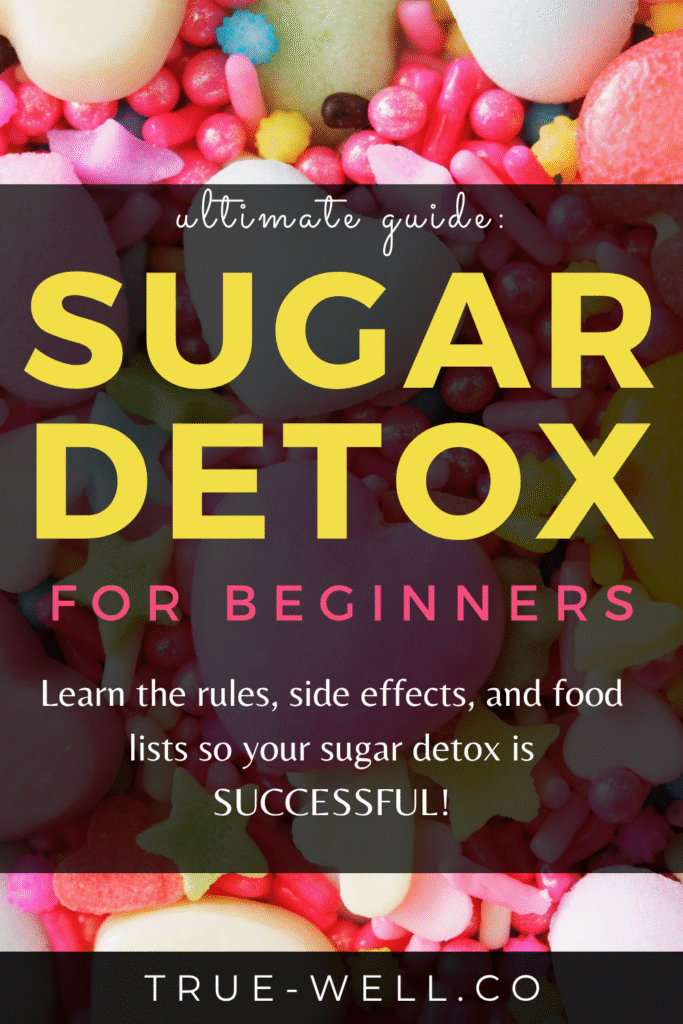












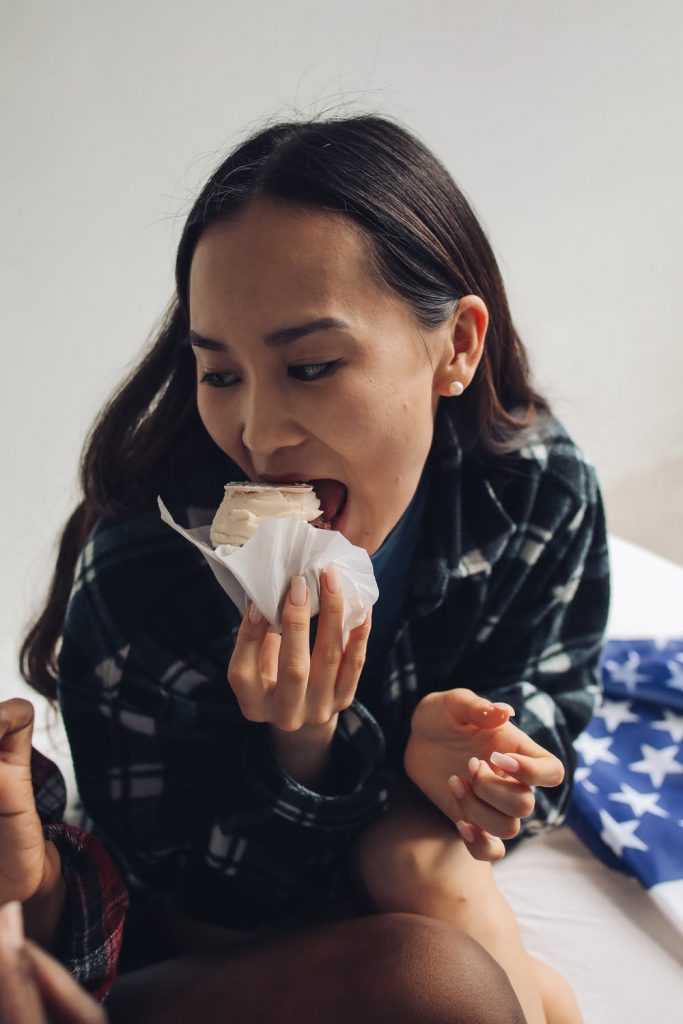






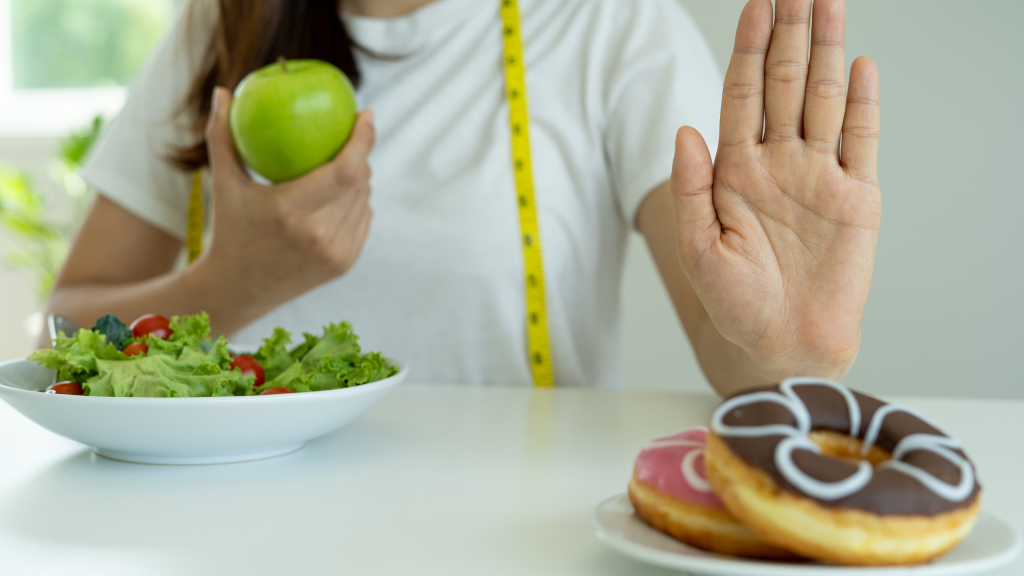
























































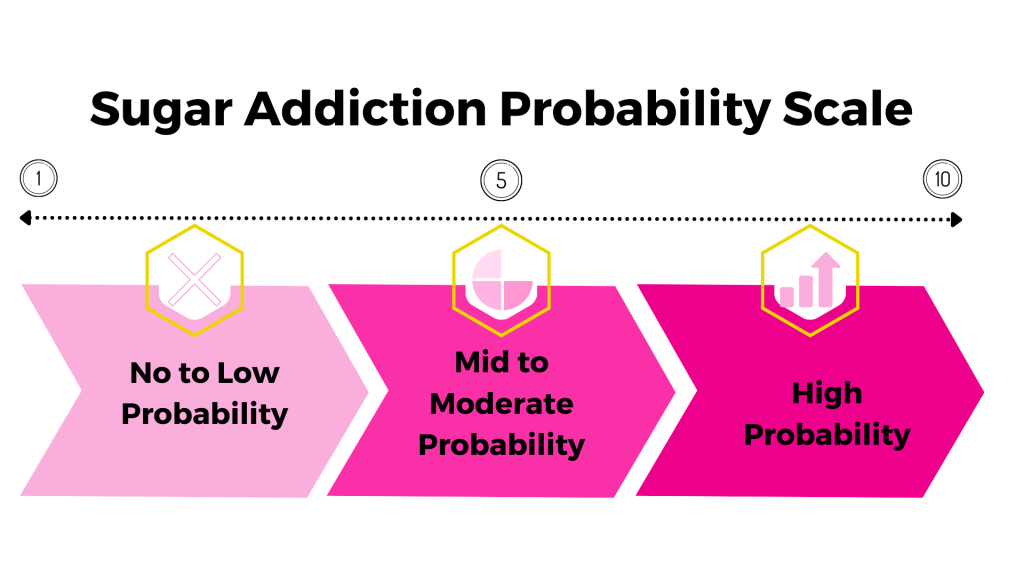





 place where healthy + efficient merge, and drinking more water
place where healthy + efficient merge, and drinking more water  every day absolutely holds a place high on the list of things that tick off both boxes.
every day absolutely holds a place high on the list of things that tick off both boxes.